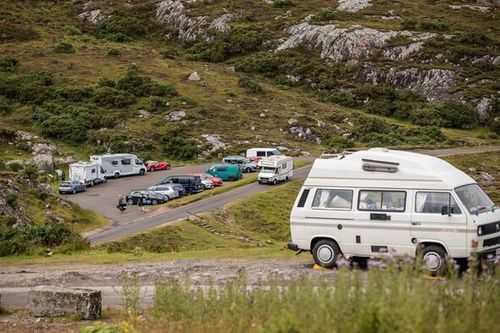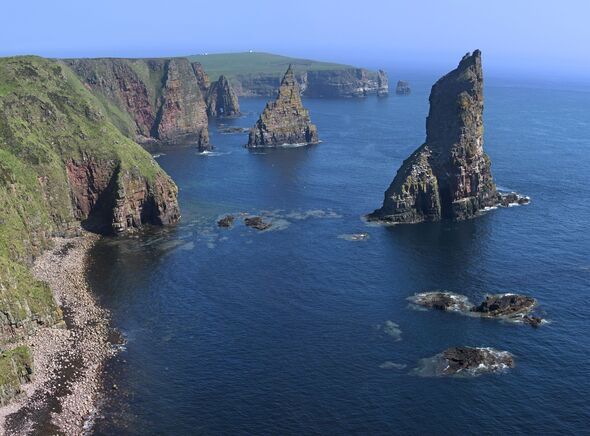

At the time, branding the bending scenic roads along the North Coast of the British Isles 'Scotland's Route 66' felt like a masterstroke.
Although excursions in the Highlands have been beloved by tourists from around the world for generations, the wealth visitors brought to the area was enjoyed more in some parts of the region than others.
It wasn't that the views in the lesser-visited spots were any less spectacular in terms of natural beauty or possessed fewer interesting attractions; the problem was that people weren't flowing through them.
But by simply encouraging people to embark on 516-mile road trips around Scotland's northern coast the tourist board believed financial benefits could be reaped by more parts of the country.
A circular coastal trip that many start and finish in Inverness, it takes in the likes of John o' Groats, Ullapool and Applecross. And, when launched in 2015, the North Coast 500 as it was branded had an immediate impact.
A showed that in the first year alone, 29,000 more visitors came to the Highlands and the local economy was boosted by £9 million.
"[It] shows the route is already delivering for the north of Scotland and has tremendous potential to further benefit the communities it serves, encourage more investment in tourism facilities, stimulate jobs and expand the tourism season," Tourism Secretary Fiona Hyslop gushed in response to the numbers.
The initial boost turned out be the start of a massive spike in popularity.

As the route nears its 10th anniversary it is by the leadership it has achieved a "global audience reach" of 11.3 billion.
But, as is ever the case, the influx of road trippers to Northern Scotland hasn't been without a significant downside.
"The roads in Scotland [and] Wales are often single track, which is problematic," explained Dr Adele Doran, a principal lecturer in tourism at Sheffield Hallam University.
"There are huge distances between the major habitations in these lovely rural areas. So bins aren't readily available and you're not going to [be able to install] bins in all the different lay-bys because they're very rural.
"So people who drive in the North Coast 500 are leaving their litter. There are limited toilet facilities [...], so there's been an increase in human waste left behind in these areas.
"There's not very much infrastructure there and it's been quite over-promoted."
Those who impact the wild Scottish environment range from cyclists with tents to drivers of hefty motorhomes, according to Dr Doran.
The strain of slower travellers combines with the impact of groups of and enthusiasts who've establishing the challenge of completing the 500-mile journey within 24 hours.
Hearing the sounds of roaring engines tearing around the hairpin bends of the NE500 prompted some locals to nickname the route the after the famous American motor race.
An influx of speeding drivers and novice caravan drivers on twisting A-roads is a risky cocktail and, in the years following the launch of the circuit, the unwanted label of has also been earned.
When they are not causing accidents, tourists doing the North Coast 500 are jamming up roads for locals.
"These huge motorhomes and camper vans travel down the single traffic roads," continued Dr Doran. "There's lots of cyclists and motorcyclists and motorhomes and camper vans can't get around. It creates traffic jams and congestion on the roads."
According to Dr Doran, pushing the north coast of Scotland to a global audience has also impacted the property market.

She explained: "Local housing prices have gone up, and locals are being priced out of the market because [places] are being converted into holiday accommodation and that makes it unaffordable for local people.
"[For locals in these areas] the shops, doctors or hospitals are a few miles away and they have to go down the single track road where, of course, they come across all this traffic.
"It brings money to the area but it's not the locals that are benefiting."
The launch of a new route across the central belt in 2019 called the Heart 200 was an acknowledgment of both the North Coast 500's success and the issues it had caused.
Whilst publicising the route, which goes through Loch Lomond, Cairngorm National Parks, the Trossachs and Perthshire, director Robbie Cairns was forced to publicy distance the new circuit from the NE500.
"They are very different routes," he told the as he insisted there is far more established tourist infrastructure to handle the traffic in this region.
For Dr Doran the North Coast 500 offers an interesting case study about how promoting tourism in areas of natural wilderness can destroy the thing that make a trip appealing in the first place.
She added: "If you are going there for this sort of romanticised adventure in nature with beautiful rural locations and the most incredible views which Scotland has to offer it may be that you're [also] sitting in a queue of congested traffic and when you pull over for the night have 10 other people parked up."
Do YOU live in an area destroyed by overtourism? Get in touch by emailing